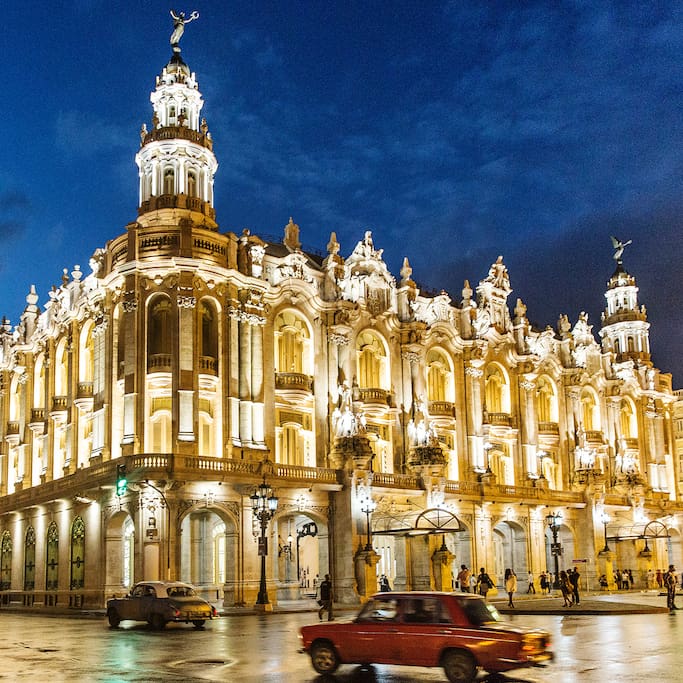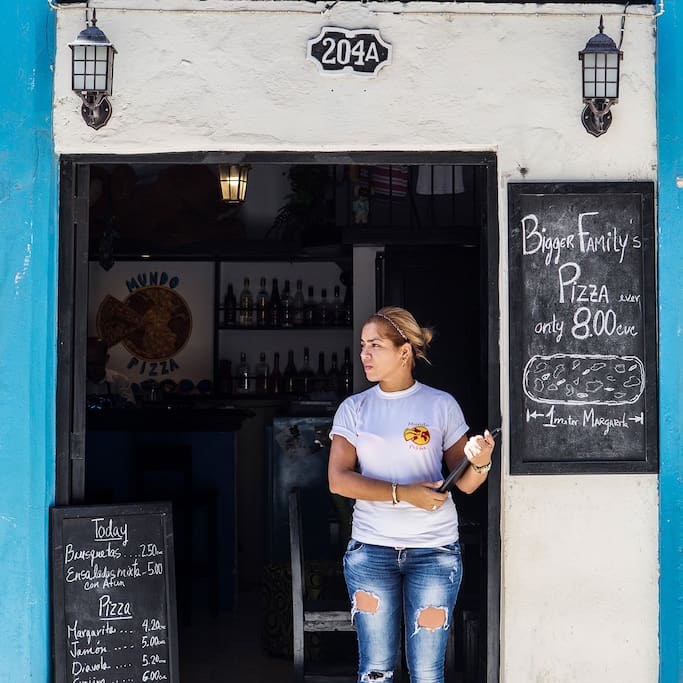Museum
El Capitolio, or the National Capitol Building (Capitolio Nacional de La Habana) is a public edifice and one of the most visited sites in Havana, capital of Cuba. The building was commissioned by Cuban president Gerardo Machado and built from 1926 to 1929 under the direction of Eugenio Rayneri Piedra. It is located on the Paseo del Prado, Dragones, Industria, and San José streets in the exact center of Havana.
461 polecane przez mieszkańców
Hawana
66 CienfuegosEl Capitolio, or the National Capitol Building (Capitolio Nacional de La Habana) is a public edifice and one of the most visited sites in Havana, capital of Cuba. The building was commissioned by Cuban president Gerardo Machado and built from 1926 to 1929 under the direction of Eugenio Rayneri Piedra. It is located on the Paseo del Prado, Dragones, Industria, and San José streets in the exact center of Havana.
Theater
Gran Teatro de La Habana is a theater in Havana, Cuba, home to the Cuban National Ballet. It was designed by the Belgian architect Paul Belau and built by Purdy and Henderson, Engineers in 1914 at the site of the former Teatro Tacón. Its construction was paid for by the Galician immigrants of Havana to serve as a their community-social center. Located in the Paseo del Prado, its facilities include theatres, a concert hall, conference rooms, a video screening room, as well as an art gallery, a choral center and several rehearsal halls for dance companies. It hosts the International Ballet Festival of Havana every two years since 1960.
682 polecane przez mieszkańców
Great Theatre of Havana
458 P.º de MartíGran Teatro de La Habana is a theater in Havana, Cuba, home to the Cuban National Ballet. It was designed by the Belgian architect Paul Belau and built by Purdy and Henderson, Engineers in 1914 at the site of the former Teatro Tacón. Its construction was paid for by the Galician immigrants of Havana to serve as a their community-social center. Located in the Paseo del Prado, its facilities include theatres, a concert hall, conference rooms, a video screening room, as well as an art gallery, a choral center and several rehearsal halls for dance companies. It hosts the International Ballet Festival of Havana every two years since 1960.
Neighborhoods
Old Havana is the city-center and one of the 15 municipalities forming Havana, Cuba. It has the second highest population density in the city and contains the core of the original city of Havana. The positions of the original Havana city walls are the modern boundaries of Old Havana
404 polecane przez mieszkańców
Old Havana
Old Havana is the city-center and one of the 15 municipalities forming Havana, Cuba. It has the second highest population density in the city and contains the core of the original city of Havana. The positions of the original Havana city walls are the modern boundaries of Old Havana
Restaurant
La Bodeguita del Medio is a typical restaurant-bar of Havana (Cuba). It is a famous tourist destination because of the personalities which have patronized it: Salvador Allende, the poet Pablo Neruda, the artist Josignacio and many others. La Bodeguita lays claim to being the birthplace of the Mojito cocktail, prepared in the bar since its opening in 1942, although this is disputed. The rooms are full of curious objects, frames, photos, as well as the walls covered by signatures of famous or unknown customers, recounting the island's past.
743 polecane przez mieszkańców
La Bodeguita Del Medio
EmpedradoLa Bodeguita del Medio is a typical restaurant-bar of Havana (Cuba). It is a famous tourist destination because of the personalities which have patronized it: Salvador Allende, the poet Pablo Neruda, the artist Josignacio and many others. La Bodeguita lays claim to being the birthplace of the Mojito cocktail, prepared in the bar since its opening in 1942, although this is disputed. The rooms are full of curious objects, frames, photos, as well as the walls covered by signatures of famous or unknown customers, recounting the island's past.


